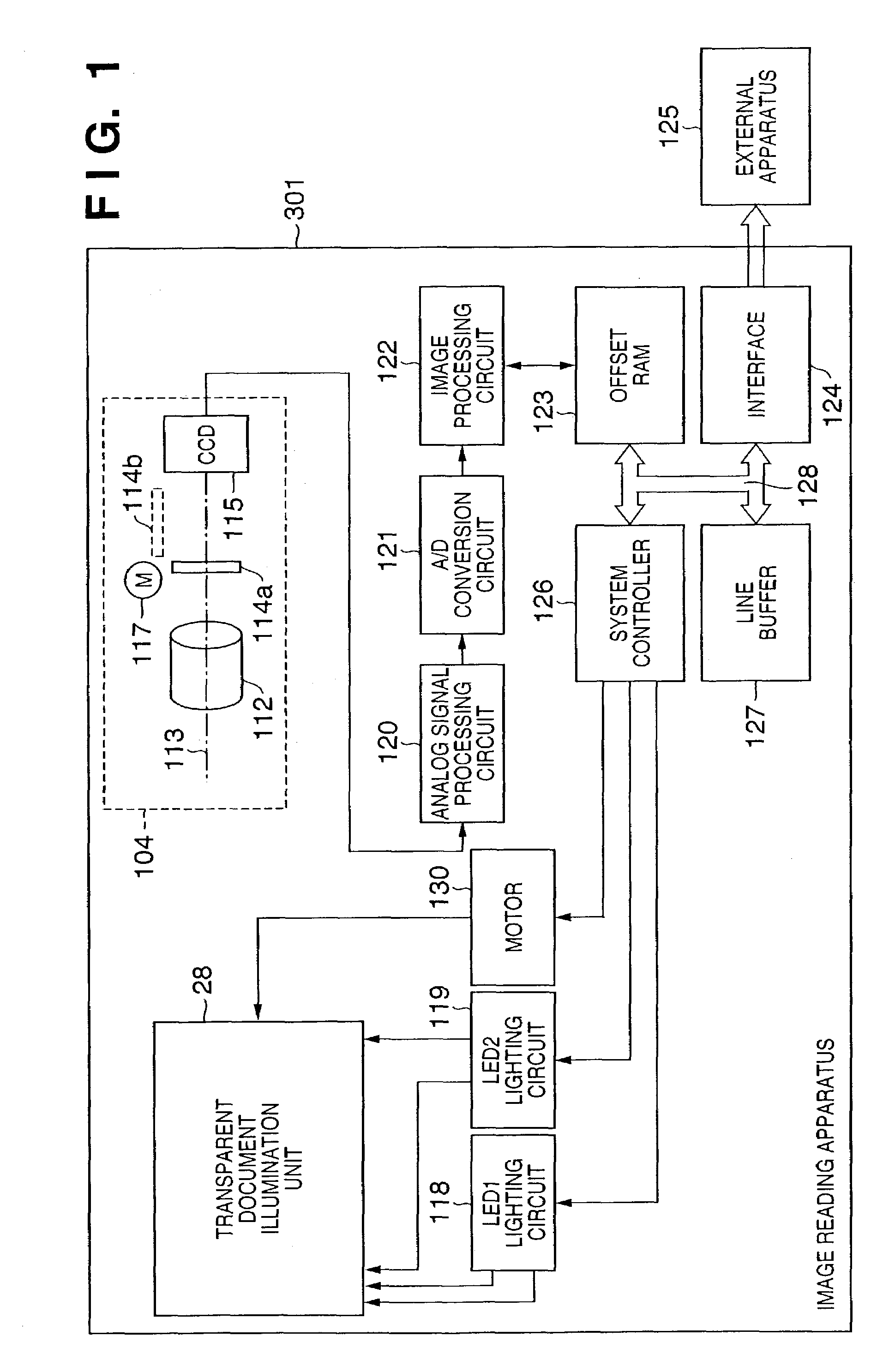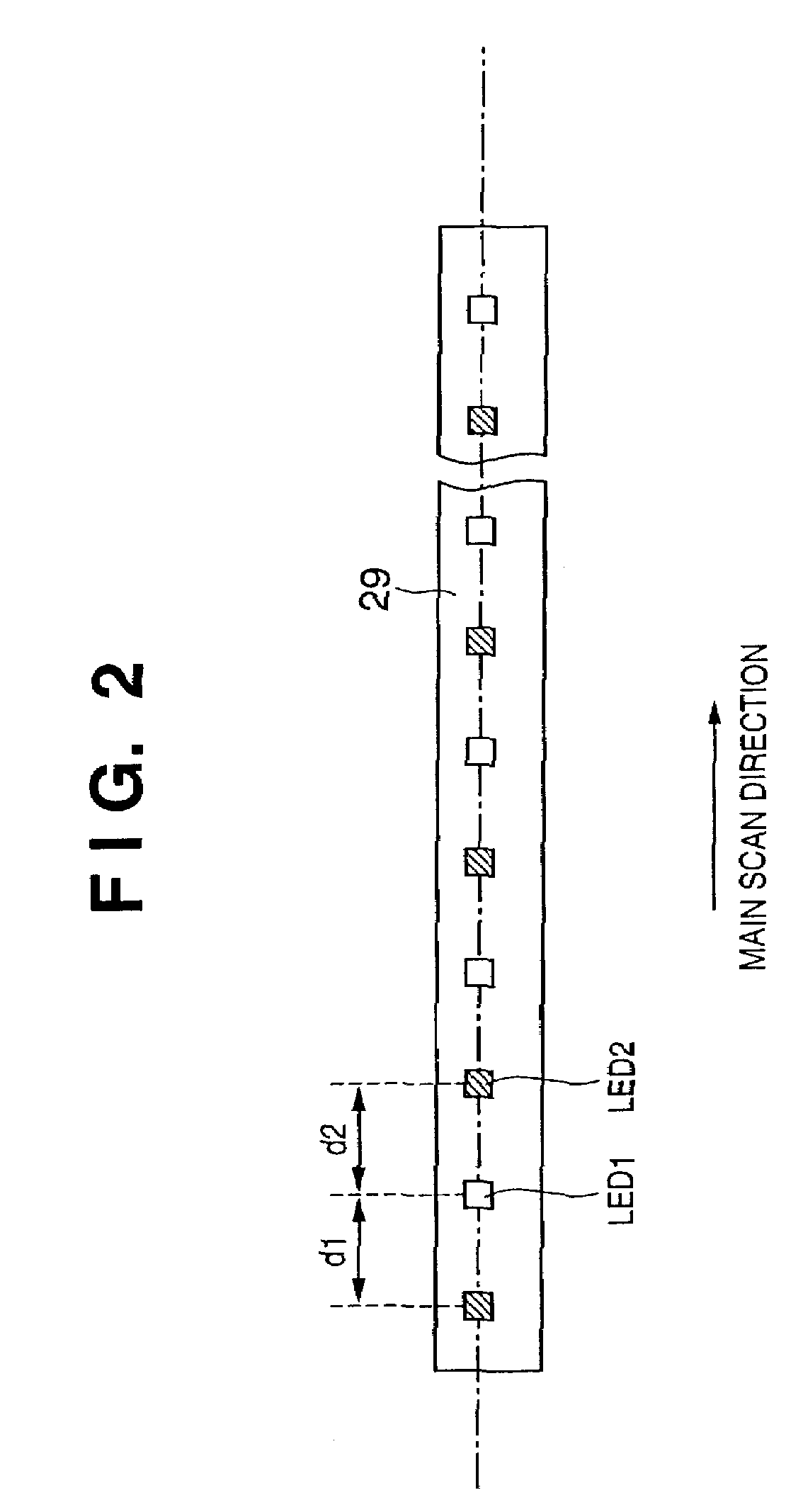Image signal correction light source that can cope with dust and scratch on transparent document, and its control
- Summary
- Abstract
- Description
- Claims
- Application Information
AI Technical Summary
Benefits of technology
Problems solved by technology
Method used
Image
Examples
first embodiment
[0044]
[0045]FIG. 1 is a block diagram showing the system arrangement which comprises an image reading apparatus 301 according to the first embodiment. Referring to FIG. 1, reference numeral 104 denotes an optical system unit which is formed on the side of a scanner main body; 112, an imaging lens which forms an optical image of light that has been transmitted through a transparent document; 113, an optical axis that passes through the center of the imaging lens; and 114, a glass plate used to correct the optical path length difference caused by the wavelength difference between visible light and infrared light. Reference numeral 114a denotes a state wherein the glass plate is placed parallel to a plane nearly perpendicular to the optical axis 113; and 114b, a state wherein the glass plate 114a is rotated through about 90° to escape from the optical path of an optical image. These states are controlled by a glass plate control motor 117. Reference numeral 115 denotes a CCD linear ima...
second embodiment
[0063]FIG. 5 shows the second embodiment of the LED array 29 on which LED1 elements which correspond to an LED light source used to read image information, and infrared LED2 elements which correspond to a light source used to detect dust / scratch information are arranged on nearly 1 Line in the main scan direction.
[0064]The LED1 and LED2 elements are respectively arranged at pitches d3 and d4 and can independently undergo ON / OFF control. In FIG. 5, the present invention can be practiced without limiting the number of LED elements.
[0065]Note that the pitches d3 and d4 need not be fixed, and may be freely set based on design causes such as the light amount level, homogeneity in the main scan direction, and the like. Note that the LED1 elements can use a plurality of types of LEDs such as R, G, B, white, and the like.
[0066]With the layout shown in FIG. 5 as well, the light amount distribution L1b formed by LED1, and the light amount distribution L2b formed by LED2 can be made nearly equ...
third embodiment
[0067]In FIG. 6, Motor HSYNC indicates a period signal for 1 Line to be scanned by the motor 130.
[0068]The accumulation time (CCD Shift gate pulse period) of the CCD image sensor 115 is divided into, e.g., four periods in 1 Line, as shown in FIG. 6, and a signal component as image information obtained by an ON / OFF control pulse of LED1, and a signal component as image information obtained based on a relative ON time based on an ON / OFF control pulse of LED2 are alternately obtained in line sequence as CCD output signals in these periods. By averaging or adding CCD image sensor outputs corresponding to signal components of each LED, positional deviation of image information can be mostly removed.
[0069]In FIG. 6, even when positional deviation is too large to ignore the difference between the light amount distributions of LED1 and LED2 shown in FIG. 2 or 5, or when the difference between the output levels of the LED elements is large, the ON time of LED1 can be controlled as L11 and L1...
PUM
 Login to View More
Login to View More Abstract
Description
Claims
Application Information
 Login to View More
Login to View More - R&D
- Intellectual Property
- Life Sciences
- Materials
- Tech Scout
- Unparalleled Data Quality
- Higher Quality Content
- 60% Fewer Hallucinations
Browse by: Latest US Patents, China's latest patents, Technical Efficacy Thesaurus, Application Domain, Technology Topic, Popular Technical Reports.
© 2025 PatSnap. All rights reserved.Legal|Privacy policy|Modern Slavery Act Transparency Statement|Sitemap|About US| Contact US: help@patsnap.com



